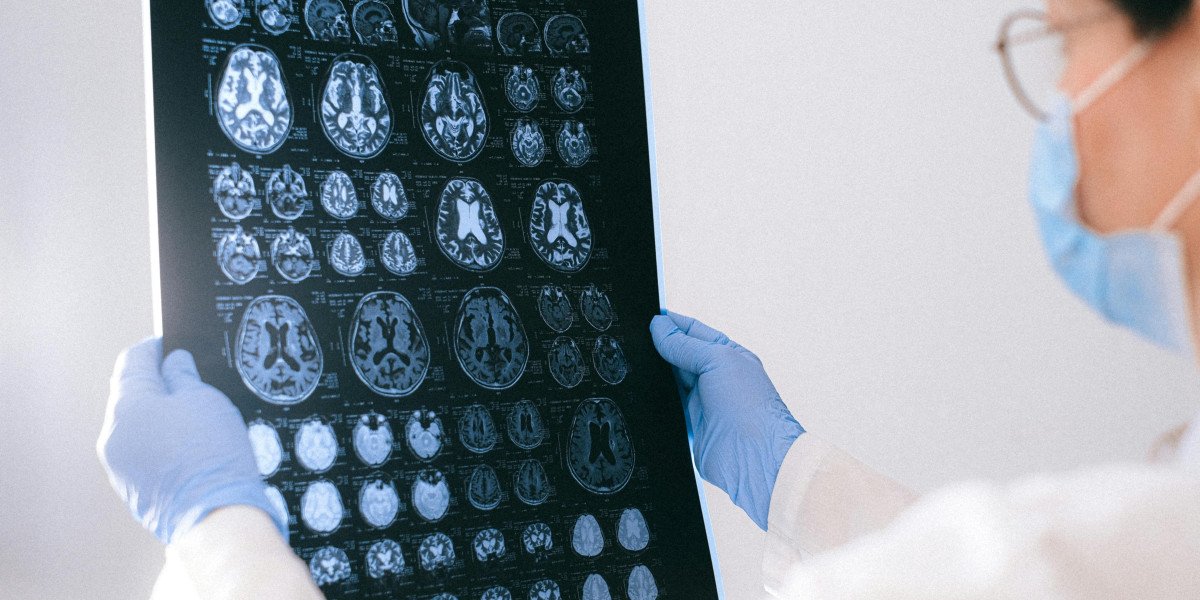These include conditions such as Alzheimer's disease, Parkinson's disease, multiple sclerosis, epilepsy, and amyotrophic lateral sclerosis (ALS), which are known for their complexity and debilitating symptoms. To understand the pathophysiology of these disorders and develop effective treatments, researchers rely heavily on neurological disorder models. These models simulate key aspects of the disease, offering valuable insight into disease mechanisms, potential therapies, and drug discovery.
What Are Neurological Disorder Models?
Neurological disorder models are experimental systems created to mimic certain features or mechanisms of neurological diseases. These models can be either in vivo (in living organisms, such as animals) or in vitro (in cell cultures or isolated tissues). They are used to explore the underlying biological processes of disease, screen potential therapeutic interventions, and evaluate the effectiveness of new treatments.
These models vary in complexity and can represent specific aspects of a disease, from genetic mutations and cellular mechanisms to symptoms and disease progression. By using these models, researchers aim to bridge the gap between basic science and clinical treatments.
Types of Neurological Disorder Models
- Genetically Modified Animal Models
Genetically modified (GM) models involve altering an organism's genetic material to replicate genetic mutations that cause or contribute to neurological disorders. These models are essential for studying how specific genes influence disease development and evaluating genetic-based therapies.
Alzheimer’s Disease: Transgenic mouse models carrying mutations in genes such as APP (amyloid precursor protein) or PSEN1 (presenilin 1) simulate amyloid plaque accumulation and tau tangle formation seen in Alzheimer's patients. These models allow researchers to investigate the pathological changes associated with the disease and test potential therapies targeting amyloid-beta and tau proteins.
Parkinson’s Disease: Rodent models with mutations in the SNCA (alpha-synuclein) gene replicate Parkinson's-like symptoms, including motor deficits and the accumulation of alpha-synuclein aggregates in dopaminergic neurons. These models help study the molecular mechanisms behind neurodegeneration and test potential neuroprotective drugs.
Huntington’s Disease: Animal models with expanded HTT genes develop motor dysfunction and cognitive impairments similar to those seen in Huntington's disease. These models are used to study the toxic effects of the mutant huntingtin protein and screen for gene therapies or drugs to slow disease progression.
Genetically modified models are indispensable for understanding the genetic underpinnings of neurological disorders and for testing gene-based therapies.
- Induced Disease Models
Induced models are created by exposing organisms to environmental factors, toxins, or physical injury, which trigger the onset of disease symptoms resembling those seen in humans. These models are useful for studying disorders caused by environmental factors or traumatic events.
Parkinson’s Disease: The neurotoxin MPTP (1-methyl-4-phenyl-1,2,3,6-tetrahydropyridine) is often used to induce Parkinson’s-like symptoms in animals by selectively damaging dopaminergic neurons. This model is essential for studying the neurotoxic effects of environmental factors and evaluating neuroprotective treatments.
Multiple Sclerosis (MS): Experimental autoimmune encephalomyelitis (EAE) is an induced animal model of MS. In EAE, rodents are injected with myelin proteins to trigger an autoimmune response that leads to inflammation and demyelination. This model is vital for studying autoimmune mechanisms and evaluating treatments aimed at modulating immune responses.
Stroke: Stroke models are typically induced by occluding blood vessels in the brain, leading to ischemia and neuronal death. These models help researchers investigate the damage caused by stroke, such as loss of brain tissue and motor deficits, and explore therapies to reduce neuronal injury and promote recovery.
Induced disease models provide a controlled way to investigate the effects of environmental and traumatic factors on neurological diseases, and they are essential for testing preventive and therapeutic strategies.
- Cellular Models
Cellular models involve the use of cultured cells or tissues to study disease at the cellular and molecular levels. These models provide a more simplified and controlled environment than whole-organism models, making them ideal for investigating specific cellular mechanisms and screening potential drugs.
Amyotrophic Lateral Sclerosis (ALS): iPSC-derived motor neurons are used to model ALS, a disease characterized by the degeneration of motor neurons. These cellular models help researchers study the mechanisms of motor neuron death and identify drugs that can protect these cells from damage.
Epilepsy: In vitro models of epilepsy involve the culture of neurons that exhibit abnormal electrical activity, mimicking the hyperexcitability that causes seizures. These models allow researchers to study the cellular basis of epilepsy and to evaluate the effectiveness of anticonvulsant drugs.
Alzheimer’s Disease: iPSC-derived neurons from patients with Alzheimer's disease can be used to model amyloid plaque formation and tau tangles in a petri dish. This approach provides valuable insights into the cellular mechanisms driving neurodegeneration and allows researchers to test therapies that target these specific pathological features.
Cellular models provide a detailed look at disease mechanisms at the molecular level and are invaluable for high-throughput drug screening.
- Organoid Models
Organoids are three-dimensional (3D) cell cultures that replicate the structure and function of organs, including the brain. They are typically derived from stem cells, including induced pluripotent stem cells (iPSCs), and offer a more human-like system for studying neurological diseases.
Autism Spectrum Disorder (ASD): Brain organoids derived from individuals with ASD exhibit altered neural connectivity, mimicking aspects of the disorder. These models help researchers study the developmental basis of ASD and evaluate potential therapeutic interventions.
Zika Virus and Microcephaly: Zika virus infection can lead to microcephaly, a condition where the brain does not develop properly. Brain organoids have been used to study the effects of Zika virus on neural development and test potential therapies to prevent or mitigate the effects of microcephaly.
Neurodegenerative Diseases: Brain organoids are also being used to model various neurodegenerative diseases, such as Alzheimer's and Parkinson's. These organoids provide a more accurate and complex system for studying the interactions between neurons and glial cells, and for testing potential drug candidates.
Organoids offer a more realistic representation of human brain development and disease, bridging the gap between simple cell cultures and animal models.
Benefits of Neurological Disorder Models
Insight into Disease Mechanisms: Disease models allow researchers to explore the genetic, molecular, and cellular mechanisms that underlie neurological disorders. This understanding is critical for identifying new drug targets and biomarkers for early diagnosis.
Therapeutic Development: These models are essential for evaluating the safety and efficacy of new treatments. Researchers can test potential drugs, gene therapies, and other interventions in preclinical models before moving to human clinical trials.
Personalized Medicine: Patient-derived models, such as iPSCs and organoids, allow for the study of diseases in the context of an individual’s genetic makeup. This can lead to more personalized treatment strategies that are tailored to the specific needs of each patient.
High-Throughput Drug Screening: Cellular and organoid models are often used in high-throughput drug screening, where large numbers of potential drug candidates can be tested quickly and efficiently. This accelerates the drug discovery process.
Challenges of Neurological Disorder Models
Species Differences: While animal models are valuable, species differences between humans and animals can limit their relevance. For instance, rodent brains differ significantly from human brains in terms of complexity, size, and function.
Complexity of Diseases: Many neurological diseases have multifactorial causes, making it difficult to fully replicate all aspects of the disease in a single model. For example, Alzheimer’s disease involves a complex interplay of genetic, environmental, and cellular factors, which may not all be captured in one model.
Clinical Translation: Despite the success of preclinical models, many promising therapies fail to translate into human treatments. This discrepancy highlights the need for more accurate and predictive models that better mimic human disease progression.
Ethical Concerns: The use of animals in research raises ethical considerations, particularly in genetically modified organisms or models that induce disease. Researchers must follow ethical guidelines to minimize animal suffering and ensure that their use is justified by the potential benefits.
The Future of Neurological Disorder Models
The future of neurological disorder models is bright, with several exciting advancements on the horizon:
Gene Editing: CRISPR and other gene-editing technologies are improving the ability to create more precise models of neurological diseases. These tools allow for more accurate modeling of genetic mutations and the development of targeted gene therapies.
3D Models and Organoids: Advances in 3D cell culture and organoid technology are enabling the creation of more sophisticated, human-like models of the brain. These models provide greater insights into brain function and disease pathology.
Artificial Intelligence: AI and machine learning techniques are being integrated into disease modeling to help analyze complex data and predict disease progression. These technologies can accelerate drug discovery and therapy development.
Patient-Derived Models: The use of patient-specific iPSCs and organoids is expected to grow, offering more personalized and accurate representations of diseases. These models will allow researchers to test therapies on a patient's unique genetic background, leading to more tailored treatments.
Conclusion
Neurological disorder models are critical tools in the ongoing effort to understand and treat brain diseases. While challenges such as species differences, model limitations, and clinical translation remain, advancements in genetic engineering, stem cell technology, and AI are improving the precision and applicability of these models. As research continues to evolve, neurological disorder models will play a pivotal role in unraveling the complexities of brain disorders and developing effective therapies for those affected by these debilitating conditions.







